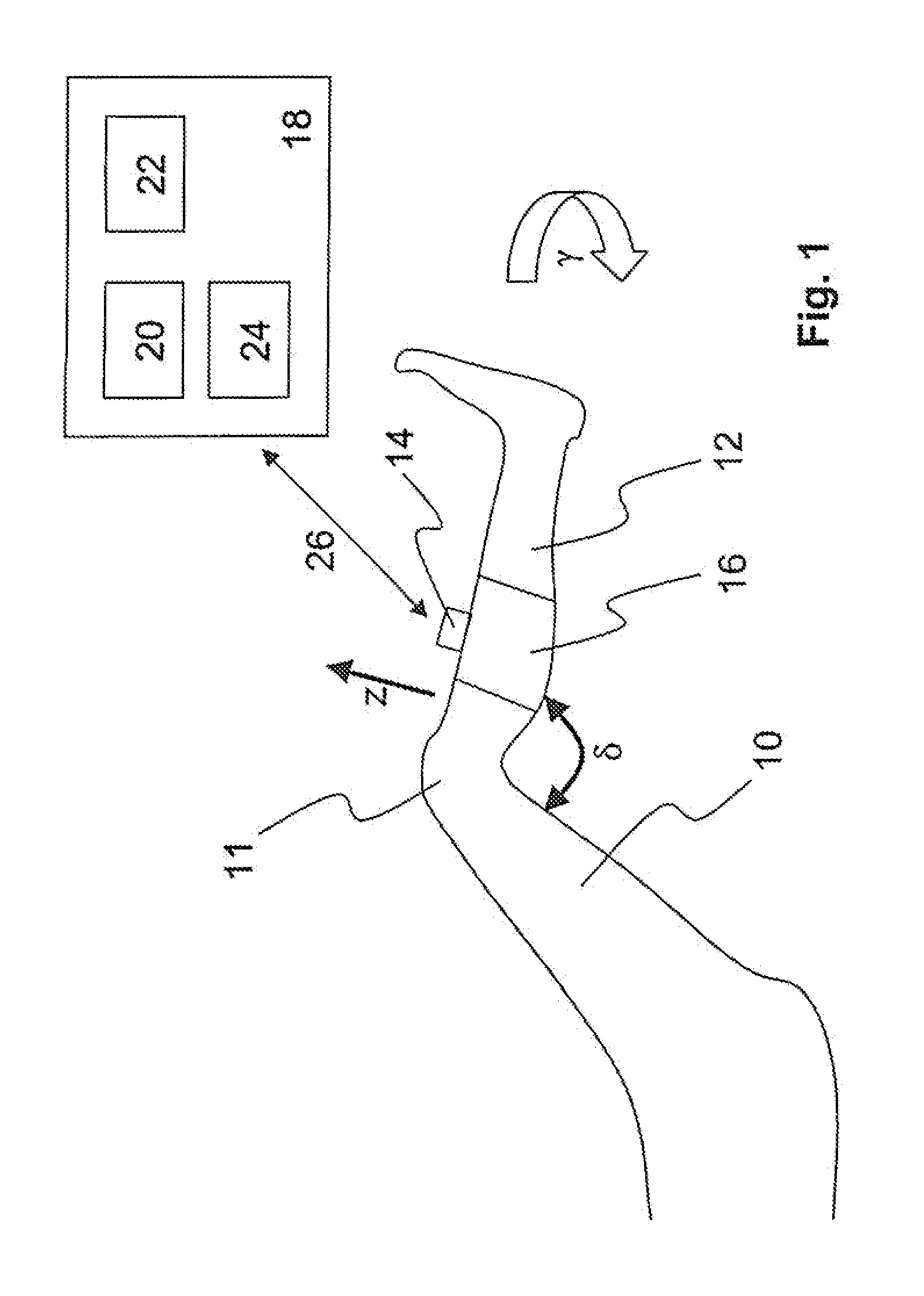Device for determining the stability of a knee joint
a technology the knee joint, which is applied in the field of devices for can solve the problems of purely dependent examination, knee joint instability, and take tensile forces, and achieve the effect of determining the stability of the knee joint, simple structure and simplifying the handling of the devi
- Summary
- Abstract
- Description
- Claims
- Application Information
AI Technical Summary
Benefits of technology
Problems solved by technology
Method used
Image
Examples
Embodiment Construction
[0056]Exemplary embodiments of the present invention when carrying out the Lachmann or pivot-shift test are explained below. However, the present invention is not restricted to a use in the Lachmann or pivot-shift test. In principle, the present invention can be used in any diagnostic method in which the lower leg and / or the thigh is moved.
[0057]FIG. 1 shows a schematic illustration of a human leg with a device according to the invention for determining the stability of a knee joint. Both the translational stability and the rotational stability of a knee joint can be determined with the device shown.
[0058]The leg comprises a thigh 10, a knee joint 11 to be diagnosed and a lower leg 12.
[0059]An inertial sensor 14 is fastened to the lower leg 12 with the aid of a fastening device 16. Furthermore, a processing device 18 for processing the measured values of the inertial sensor 14 is provided. The processing device 18 comprises a display 20, a storage device 22 and processing logic 24.
[...
PUM
 Login to View More
Login to View More Abstract
Description
Claims
Application Information
 Login to View More
Login to View More - R&D
- Intellectual Property
- Life Sciences
- Materials
- Tech Scout
- Unparalleled Data Quality
- Higher Quality Content
- 60% Fewer Hallucinations
Browse by: Latest US Patents, China's latest patents, Technical Efficacy Thesaurus, Application Domain, Technology Topic, Popular Technical Reports.
© 2025 PatSnap. All rights reserved.Legal|Privacy policy|Modern Slavery Act Transparency Statement|Sitemap|About US| Contact US: help@patsnap.com



